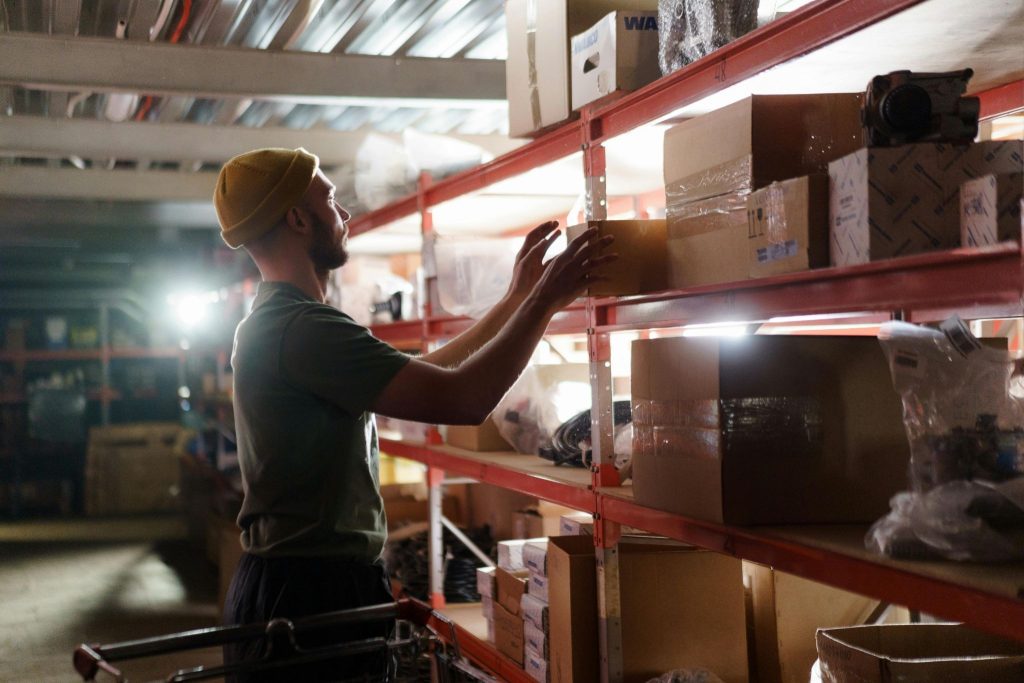
The Warehouse Reality Check
Ask any warehouse manager what they need most, and they’ll likely tell you: “to get more work done in a day”.
But hiring isn’t always the solution, nor is bringing on high priced “consultants”, not to mention there’s so many software offerings to choose from.
And none of those things guarantee to fix the deeper problems: inefficient workflows, poor layout, disconnected systems, and manual bottlenecks.
The real challenge (and opportunity) lies in doing more with the team you already have: using smarter processes, better visibility, and the right technology (for you) to make every task faster and more accurate.
Let’s get into how to make that happen for your own operations.
Step 1: Simplify the Workflow Before You Automate It
Before bringing in new tech, fix the process itself.
You can’t automate chaos, you’ll just make mistakes faster. Instead, start with a simple audit:
- Where are workers wasting time?
- Which steps still rely on paper, clipboards, or calls to confirm stock?
- Where does data go missing or get entered twice?
Some common fixes include reducing travel time inside the warehouse, storing fast-moving products near picking and shipping stations, and using consistent label placement so scanners can capture data instantly.
Once you’ve simplified the flow, you’ll have a foundation worth automating.
Step 2: Train for Flexibility, Not Just Roles
Cross-training your team is one of the cheapest and most effective ways to boost productivity. When pickers know how to receive shipments, and receivers know how to pack, you can shift labor dynamically based on demand.
This prevents bottlenecks when one team gets buried and another has downtime, but it also builds resilience. Vacations, sick days, and order spikes don’t throw everything off balance — because everyone can cover each other’s roles.
Smart training, paired with clear procedures, allows fewer people to do more with less confusion.

Step 3: Bring Your Data to the Floor
One of the biggest hidden time-wasters in any warehouse is walking, not between warehouse aisles, but between all your systems.
When employees have to stop what they’re doing to check a desktop terminal, confirm quantities, or ask a manager for approval, productivity drops.
That’s why Mobile Warehouse Tools have become so important. Handheld scanners or mobile apps connect directly to your inventory system — so workers can:
- Receive products and scan them into location immediately
- Pick and ship orders with real-time validation
- Perform cycle counts without paperwork
- Print replacement labels on the fly
If you’re using systems like Fishbowl or Katana, a Mobile WMS integration makes this workflow seamless.
Step 4: Let Real-Time Data Do the Heavy Lifting
You can’t manage what you can’t see!
Many small and mid-sized businesses operate with delayed data — yesterday’s numbers, last week’s reports, or updates that only happen once someone hits “refresh.”
That delay creates a wide-spread ripple effect:
- Pickers grab stock that’s already allocated
- Orders get delayed because parts haven’t been received
- Managers make purchasing decisions based on stale info
The fix? Real-time visibility. Many modern inventory systems can sync orders, materials, and finished goods across multiple locations in real-time, and when you integrate a Multi-Cart (which connects ecommerce and wholesale channels), suddenly your warehouse isn’t reacting — it’s anticipating.
Real-time data turns guesswork into precision.
Step 5: Automate Where It Hurts the Most
You don’t need robots or conveyor belts to automate effectively (though they do look cool).a
Start small with repetitive, low-value tasks that consume time and create errors. Some early and easy automation wins include:
- Auto-assigning pick tickets by zone or order type
- Automatically generating replenishment POs when stock hits a threshold
- Auto-syncing orders between marketplaces (via Multi-Cart)
- Sending automated “order received” notifications to reps or customers
To be clear: the goal isn’t to remove people, it’s to remove friction.
When the system handles the repetitive stuff, your team can focus on the work that actually requires human decision-making — quality checks, customer service, and problem-solving.
Step 6: Empower Your Sales and B2B Channels to Help Themselves
Your warehouse isn’t the only place efficiency breaks down — it often starts with how orders are created.
If your reps are still emailing spreadsheets or manually entering wholesale orders, that’s time your warehouse spends waiting.
So plug in a B2B Sales Portal and capture customer orders the very moment they need to buy.
It gives your customers and sales reps a live ordering portal tied directly to your inventory, meaning buyers can log in, see their pricing, and place orders that flow straight into your system with no rekeying or delays.
It’s automation that begins before the warehouse even touches the product.
Step 7: Measure What Matters
You can’t improve what you don’t measure, but measuring everything is a trap. Instead, focus on the metrics that actually drive productivity:
- Pick Rate: Orders picked per hour or per employee
- Order Accuracy: The percentage of orders shipped error-free
- Cycle Count Accuracy: How close the system’s numbers are to physical counts
- Dock-to-Stock Time: How fast received goods become available in the system
These simple KPIs identify slowdowns, allowing you to apply proper tech or process fixes.
For instance, if dock-to-stock time lags, mobile scanning during receiving can cut hours off each shipment.
Step 8: Build a Continuous Improvement Culture
Technology can only go so far, which is where your people make the difference. Encourage your team to share what slows them down and actually reward them for finding better ways to work.
Small improvements, even just one per week, compound into huge gains over time.
Need an idea on how to start? Run short “improvement huddles” at shift changes, and ask one question: What slowed you down today, and how can we fix it?
Document it, test the change, and keep what works. This mindset turns your warehouse into a living, learning system that naturally gets more efficient as it grows.
The Payoff: Doing More With Less (and Doing It Happily)
When you streamline workflows, use mobile tools, and connect systems in real-time, something surprising happens:
- Your warehouse stops feeling like it’s constantly behind
- Fewer people can handle more orders
- Errors drop, morale rises, and the business gains the flexibility to scale
Tools like Katana, Fishbowl, and give you the platform, while integrations like LilyPad WMS, Vortex, and Multi-Cart bring it all together — uniting your sales, warehouse, and data in one clean loop.
Efficiency isn’t about doing more work, it’s about making work easier to do right.
